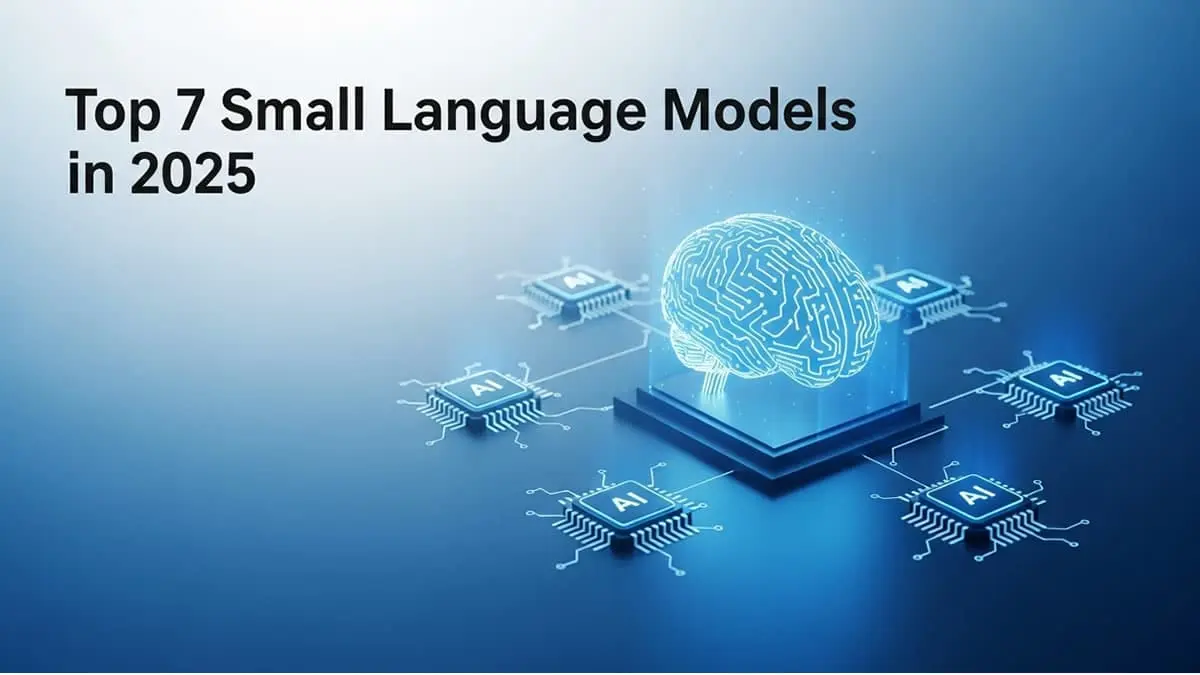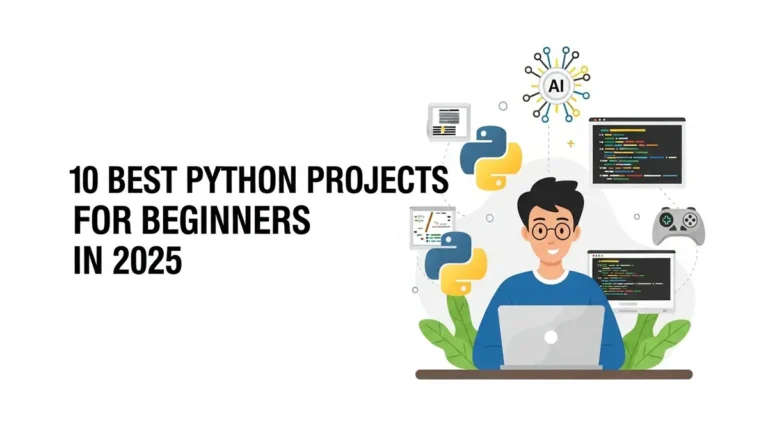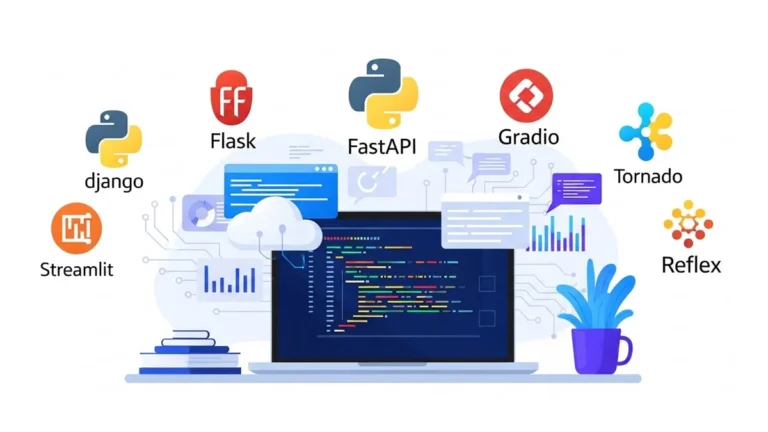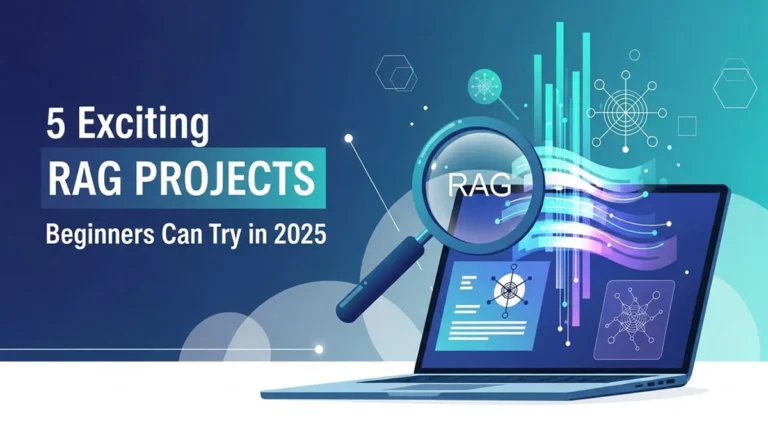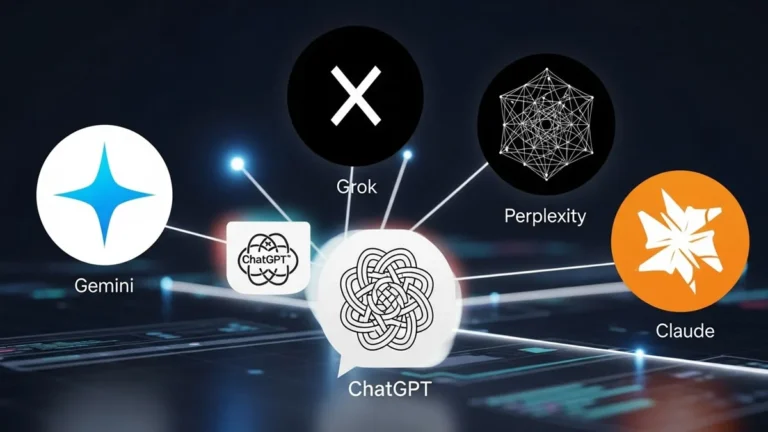Top 7 Small Language Models in 2025
Small Language Models (SLMs) are steadily emerging as the practical representation of artificial intelligence in today’s rapidly shifting environment. They are becoming quicker, sharper, and much more resourceful, providing reliable outcomes with only a portion of the hardware, storage, and energy that massive models typically consume.
A rising movement in the artificial intelligence sector is utilizing large language models (LLMs) to craft synthetic training sets, a process similar to GRPO, the AI training method changing model optimization. Which are subsequently applied to refine SLMs for specialized assignments or to acquire distinctive writing styles.
Consequently, SLMs are progressing to be smarter, faster, and increasingly adaptable, all while retaining a compact framework. This advancement unlocks significant opportunities: intelligent models can now be embedded directly into offline systems that operate without a continuous internet connection, ensuring enhanced confidentiality, responsiveness, and consistency.
In this coverage, we examine several of the leading small language models creating momentum within the AI community. We will evaluate their scalability and performance, allowing readers to understand which alternatives offer the most balanced efficiency for specific requirements.
1. google/gemma-3-270m-it
The Gemma 3 270M is the tiniest and most ultra-light edition within the Gemma 3 collection, engineered for speed and inclusivity. Holding only 270 million parameters, it functions smoothly on hardware possessing minimal computing power, making it perfect for testing, prototyping, and lightweight operations.
Even with its limited dimensions, the 270M model sustains a 32K context capability and effectively handles several assignments like straightforward answering, concise summarization, and logical reasoning.
2. Qwen/Qwen3-0.6B
The Qwen3-0.6B is the most compact version from the Qwen3 lineup, created to provide notable performance yet remain highly optimized and approachable. With 600 million parameters (0.44B not embedding), it establishes equilibrium between capacity and required computational effort.
Qwen3-0.6B integrates functionality to effortlessly toggle between “thinking mode” for sophisticated logic, mathematics, and software coding, and “non-thinking mode” for fast, casual dialogue. It enables a 32K sequence length and ensures multilingual engagement across over one hundred languages.
3. HuggingFaceTB/SmolLM3-3B
The SmolLM3-3B is a relatively smaller but strong open-access model crafted to extend the frontiers of compact AI systems. With three billion parameters, it supplies competitive capability in reasoning, analytical math, coding tasks, and multiple languages while remaining efficient for broad utilization.
SmolLM3 features a two-mode reasoning structure, enabling individuals to alternate between a prolonged “thinking mode” for challenging inquiries and a quicker, lightweight setting for basic dialogue.
Beyond conventional text generation, SmolLM3 encourages agent-style implementation with external tool execution, broadening its real-world adaptability. As a fully transparent system with open datasets, public checkpoints, and accessible weights, SmolLM3 delivers researchers and engineers a reliable foundation for building reasoning-centered AI models within the 3B–4B range.
4. Qwen/Qwen3-4B-Instruct-2507
The Qwen3-4B-Instruct-2507 is a refined, instruction-tuned release from the Qwen3-4B sequence, designed to produce higher results in non-thinking operations. With four billion parameters (3.6B excluding embedding), it integrates major enhancements in instruction compliance, critical reasoning, reading comprehension, scientific analysis, advanced mathematics, programming, and system tool interaction while also broadening knowledge across multiple languages.
Unlike other Qwen3 units, this version is optimized exclusively for non-thinking responses, guaranteeing quicker and more economical output without generating reasoning tokens. It equally demonstrates stronger alignment with audience preferences, excelling in imaginative writing, dynamic dialogue, and open-ended subject reasoning.
5. google/gemma-3-4b-it
The Gemma 3 4B is an instruction-optimized, multimodal variant within the Gemma 3 portfolio, constructed to interpret both written language and image-based inputs while producing sophisticated textual outputs. With four billion parameters and 128K token window capacity, it becomes suitable for applications such as answering complex queries, summarizing long documents, reasoning analysis, and comprehensive visual understanding.
Importantly, this model is broadly applied for domain-specific fine-tuning in textual classification, image labeling, or specialized industrial operations, further improving accuracy and adaptation in defined areas.
6. Janhq/Jan-v1-4B
The Jan-v1 is the pioneering edition within the Jan suite, purpose-built for agent-driven reasoning and analytical problem-solving inside the Jan App ecosystem. Built from the Lucy architecture and enhanced through the Qwen3-4B-thinking mechanism, Jan-v1 supplies elevated reasoning potential, structured tool execution, and upgraded success on advanced interactive tasks.
Through strategic scaling and targeted fine-tuning of its design, the model has secured a 91.1% accuracy score on SimpleQA, setting an important milestone in factual questioning for models within this size category. It is customized for deployment with the Jan application, vLLM, and llama.cpp, with configuration guidance available for optimized efficiency.
7. Microsoft/Phi-4-mini-instruct
The Phi-4-mini-instruct is a lean 3.8B parameter system within Microsoft’s Phi-4 series, designed for capable reasoning, precise instruction processing, and secure integration in both laboratory research and business operations.
Trained on an immense five trillion tokens sourced from curated internet texts, synthetic “educational-like” reasoning corpora, and organized supervised instruction sets, it supports a 128K token sequence and delivers expertise in logical reasoning, mathematics, and multilingual communication.
Phi-4-mini-instruct further incorporates structured function calling, multilingual production (20+ languages), and seamless compatibility with frameworks like vLLM and Hugging Face Transformers, ensuring flexible adaptability for multiple deployments.
Top 7 Small Language Models: Conclusion
This analysis highlights a modern generation of compact yet powerful open-source AI models reshaping the technological sector by integrating efficiency, analytical reasoning, and universal access.
From Google’s Gemma 3 selection with its ultra-compact gemma-3-270m-it and multimodal gemma-3-4b-it, to Qwen’s Qwen3 lineup with the efficient Qwen3-0.6B and the long-context instruction-oriented Qwen3-4B-Instruct-2507, these developments emphasize how careful scaling and adaptive fine-tuning can unlock multilingual and reasoning capabilities inside smaller computational footprints.
SmolLM3-3B advances the standards of compact models with dual-mode reasoning and extended context comprehension, whereas Jan-v1-4B prioritizes agent-driven reasoning and tool functionality within the Jan App platform.
Lastly, Microsoft’s Phi-4-mini-instruct proves how 3.8B parameters can achieve competitive results in logic, language, and reasoning by using high-quality synthetic data and advanced alignment techniques.
Together, these small language models are not merely trimmed-down alternatives but are actively driving the evolution of practical, efficient, and accessible artificial intelligence.

